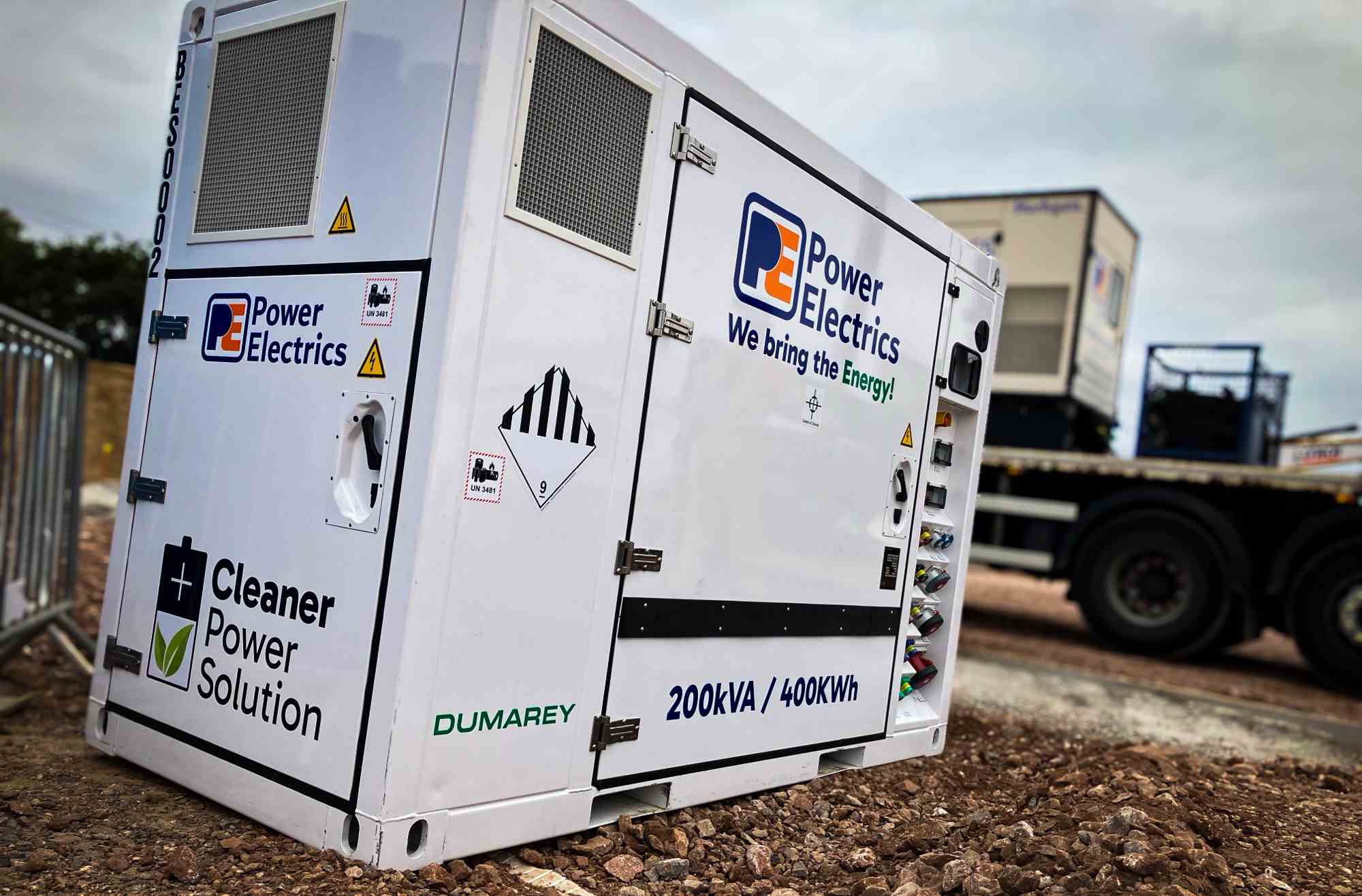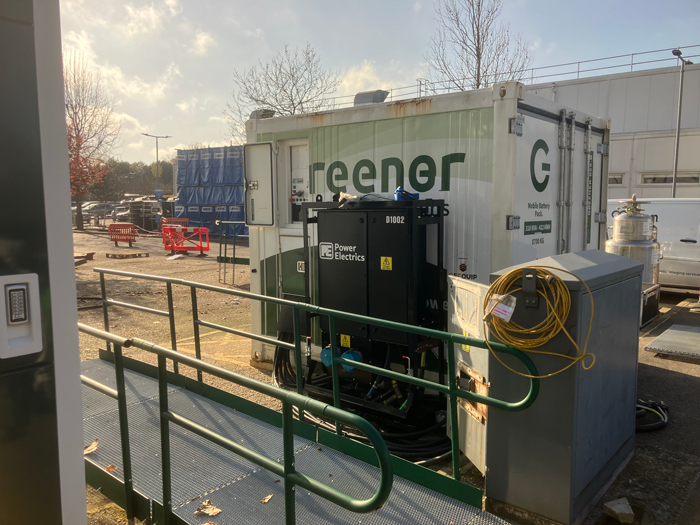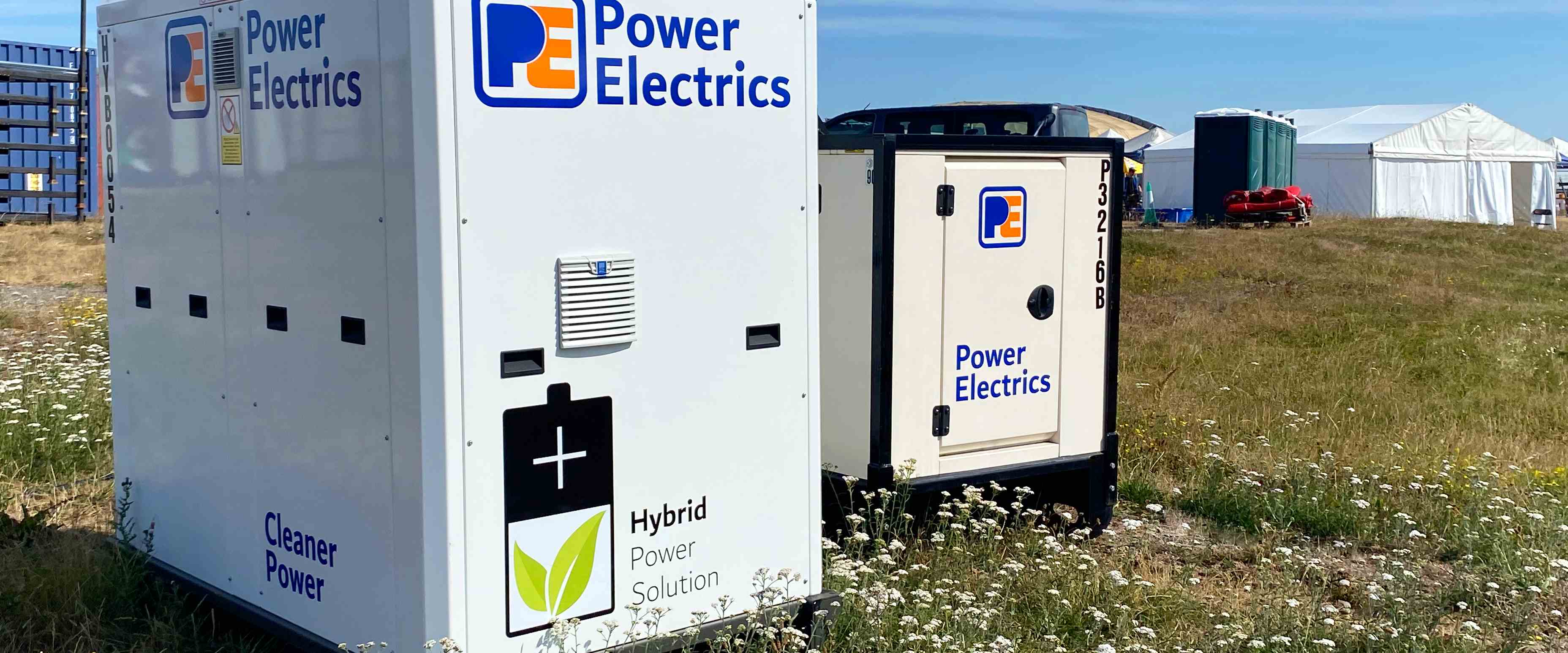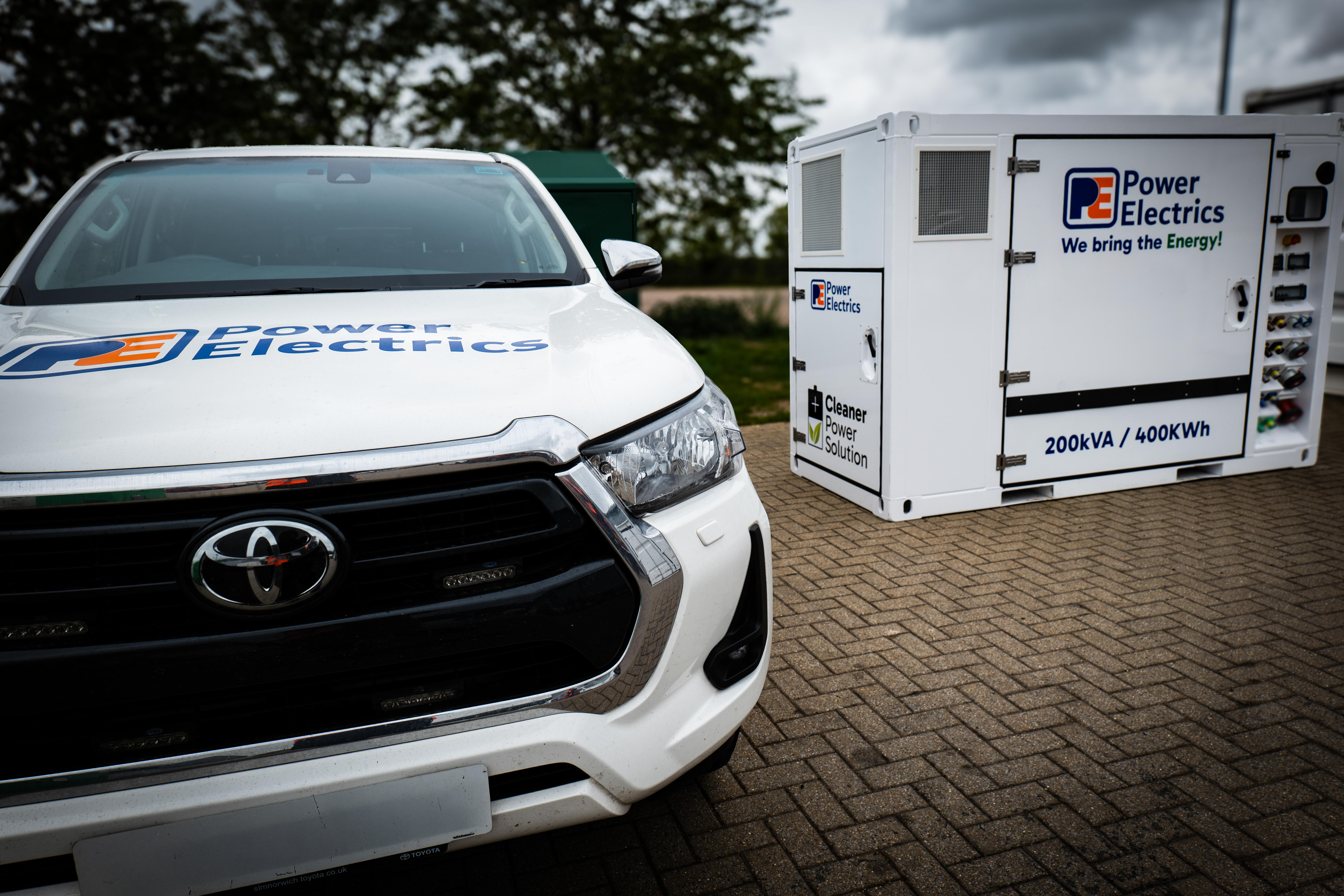How to Unlock the Full Potential of Battery Energy Storage Systems
In the push for more sustainable and cost-effective operations, Battery Energy Storage (BES) units have emerged as a game-changer for temporary power. These systems promise reduced emissions, lower fuel costs, and silent operation. However, many businesses fail to unlock their full potential due to outdated practices and common misconceptions. We are frequently asked about how businesses can use BES units effectively. Ensuring that organisations get the most from their investment in cleaner, smarter power is a clear priority – so let’s separate fact from fiction and look at some real examples of how BES units can be optimised.
What Exactly is a Battery Energy Storage (BES) Unit?
Think of a BES unit as a smart energy reservoir—a "box of electricity" that can store energy from any source, whether it's the grid, a diesel generator, or renewables like solar. It then intelligently deploys this stored energy to match the site's power demand precisely.
The system acts as a silent controller, constantly analysing the load and deciding the most efficient source to draw from. Its primary function is to solve the classic problem of generator inefficiency, such as "wet stacking" or "low loading," where a large generator is run at a fraction of its capacity just to handle occasional spikes in demand. By letting the battery handle these peaks, the entire system becomes dramatically more efficient.
The core benefits are clear:
• Reduced Emissions: Less generator runtime means a smaller carbon footprint.
• Significant Fuel Savings: Generators run only when needed and at their most efficient load.
• Silent Power: Ideal for noise-sensitive areas or overnight operations.

Busting the Biggest Myth: Handling Peak Loads
A widespread misconception is that batteries can't handle large, sudden power demands. These kinds of transient loads are the ideal application for BES technology, as well as hybridising a small generator or boosting a limited grid connection with a BES. This is where the most significant cost and environmental savings are found.
Modern higher-voltage lithium based systems are equipped with powerful bidirectional charger / inverters that can go from 0% to 100% output in milliseconds. This allows them to deliver or absorb huge amounts of energy almost instantly.
Consider applications with dynamic loads, like a tower crane or a mobile MRI scanner. These machines require enormous peak power when operating but consume almost nothing when idle. For instance, a tower crane may only use between 20 and 100 kilowatt-hours (kWh) of actual energy in a full day. Running a large 200 to 500 kVA generator just to power these brief peaks is incredibly wasteful and can damage the generator's emissions system.
A far cleaner solution is to trickle-charge a BES from a small on-site grid connection or generator and let the battery's inverter power the heavy machinery. You get all the power you need, precisely when you need it, without the waste.

A Real-World Example: Efficiently Powering Medical Scanners
Imagine a temporary medical facility with multiple CT and MRI scanners. The traditional approach would involve at least two large 300 kVA generators running continuously to handle the massive power spikes from the scanning equipment, even though the background load overnight is minimal.
By introducing a BES unit alongside a single 300 kVA generator, the setup is transformed. The battery effortlessly absorbs the load spikes from the scanners while the generator is off. The generator only runs periodically to recharge the battery, leading to astounding results:
• A fuel consumption reduction of around 70%.
• An 88% reduction in total generator runtime.
This approach can be taken a step further with "grid shaving." In this mode, the BES unit is connected to a limited grid supply (e.g., 50 amps) and uses its ability to charge and discharge instantly to power a site that would typically require a 300-400 amp supply. The generator is eliminated completely, resulting in zero on-site emissions.
While the fuel savings can often more than offset the hire cost of the BES unit, the total financial benefit will always depend on site-specific factors like emissions regulations and the need for silent power.

The Golden Rule for Success: Know Your Load
If there is one principle to follow, it's this: understand your site's true power consumption.
Too often, temporary power solutions are specified based on outdated electrical design calculations that assume a worst-case scenario where every piece of equipment runs at full capacity simultaneously. For example, a modular office complex might be designed for a peak load of over 500 amps, assuming every 32-amp outlet is maxed out. In reality, with modern, efficient equipment, this never happens. The actual load is far lower.
The beauty of a BES system is that it provides the capacity to deliver that theoretical peak power without the inefficiency of having a massive diesel engine running on-site just in case. Accurately knowing your load profile is the first step to designing a power solution that is tailored to your needs, not just to what's available in a rental fleet.

Key Considerations for Modern Setups
Stage V Generators: Modern Stage V engines must run at high, consistent loads to keep their emissions after-treatment systems working correctly. Low loads can cause significant damage. BES units are the perfect partner, as they can draw a heavy load from the generator to recharge, allowing the engine to run at its optimal 60-80% capacity, or be turned off.
System Safety: Fire risk is a valid concern. Reputable BES systems are manufactured to high standards (e.g., in the EU) and often use proven, automotive-grade batteries. The focus is on prevention, with advanced monitoring systems that firstly automatically regulate and control many set points within the charge and discharge control parameters and then notify operators of any irregular parameters and trigger an automated shutdown long before a critical fault can occur
Uninterruptible Power: A BES unit can act as an uninterruptible power supply (UPS). With switching speeds of less than a millisecond, the inverter can take over the load instantly if the grid fails or during a generator changeover, protecting sensitive equipment from any disruption.
By moving beyond traditional assumptions, businesses can utilise BES technology to create temporary power solutions that are not only cleaner and quieter but also significantly more efficient and cost-effective.
If you would like to find out more about our sustainable power offerings, reach out to us on the link below to find out more.

